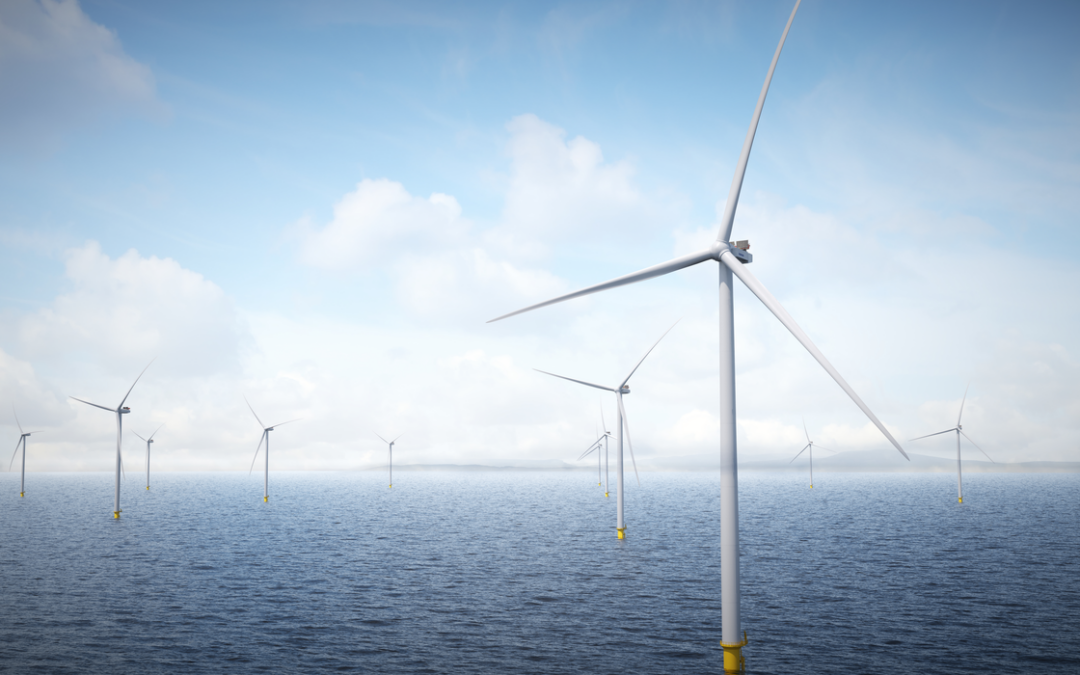Construction of Poland’s first offshore wind farm is set to begin. Once fully operational in 2026, Baltic Power – which is a joint venture between Polish state energy giant Orlen and NP Baltic Wind, a subsidiary of Canada’s Northland Power – is set to supply around 3% of Poland’s electricity needs.
Orlen announced yesterday that it has secured all the requisite construction permits, contracted all key components and secured all necessary financing. It has also started the construction of a terminal in the port city of Świnoujście that will speed up the installation of offshore wind turbines.
“Despite the formidable challenges posed by the pandemic, supply chain disruptions and military conflict across our eastern border, we have adhered to the ambitious timeline we set from the outset,” said Orlen’s CEO, Daniel Obajtek. His firm describes Baltic wind as “Central Europe’s largest green energy project”.
Otwieramy nowy rozdział historii! Największa w Europie Środkowej inwestycja w odnawialne źródła energii weszła w fazę realizacji. Przygotowania do budowy pierwszej w Polsce morskiej farmy wiatrowej Baltic Power trwały 5 lat i prowadził je zespół blisko 150 ekspertów z 20 krajów.… pic.twitter.com/zW5dBB7hhV
— ORLEN (@GrupaORLEN) October 11, 2023
The foundation laying for the Baltic Power project is scheduled for 2024. The wind farm will comprise of 76 250-metre-high turbines, each with a unit capacity of 15 MW. Total installed capacity will reach 1.2 GW in 2026.
Last month, Baltic Power signed loan agreements for a total of around €4.4 billion (a figure higher than the €3.6 billion initially reported) with 25 Polish and international financial institutions.
“This is the largest financing obtained for a single investment in Poland’s history and one of the largest transactions of its kind in the offshore area in Europe,” said Orlen.
State energy giant Orlen has secured €3.6bn in loans from 25 financial institutions – including the @EBRD and @EIB – to build Poland's first offshore wind farm https://t.co/Pa9vViR6Ig
— Notes from Poland 🇵🇱 (@notesfrompoland) September 21, 2023
Orlen has also secured licences for the construction of five additional wind farms, which will have a combined capacity of 5.2 GW. One will be located near Baltic Power – which will be 22.5 km from the coastline north of Łeba and Choczewo – while the other four will be situated near the city of Kołobrzeg.
The terminal being constructed at Świnoujście – which is expected to be operational in late 2024 or early 2025 – will be capable of installing wind turbines of 15 MW and above. Thanks to its location in northwest Poland, it will be able to serve German, Swedish and Danish projects, says Orlen.
The firm is aiming to achieve 9 GW of installed renewable energy capacity by 2030, which it says will help to avoid approximately 2.8 million tonnes of CO2 emissions annually.
Polish state energy giant Orlen has announced plans to invest $1 billion in its first carbon storage project, which will be located in the Norwegian Barents Sea.
It later aims to develop similar solutions in the Baltic Sea off Poland's coast https://t.co/UD9usek5WA
— Notes from Poland 🇵🇱 (@notesfrompoland) September 6, 2023
As part of its energy transition strategy, the company also announced last month a $1 billion (4.2 billion zloty) investment in carbon capture and storage on Norway’s continental shelf.
Poland has one of Europe’s most polluting energy sectors. The country still relies on coal to produce around 70% of its electricity, by far the highest proportion in the EU.
But the government, which has been friendly towards the politically important coal sector, this year set a new target for Poland to produce three quarters of its energy from renewables and nuclear by 2040. The plans include offshore wind power capacity of 5.9 GW by 2030 and 18 GW in 2040.
Poland’s climate ministry has outlined plans for the country to generate three quarters of its electricity from zero-emissions sources by 2040, with 51% coming from renewables and almost 23% from nuclear https://t.co/CksVqGQXkV
— Notes from Poland 🇵🇱 (@notesfrompoland) April 4, 2023

Notes from Poland is run by a small editorial team and published by an independent, non-profit foundation that is funded through donations from our readers. We cannot do what we do without your support.
Main image credit: Orlen (press materials)

Alicja Ptak is senior editor at Notes from Poland and a multimedia journalist. She previously worked for Reuters.



















